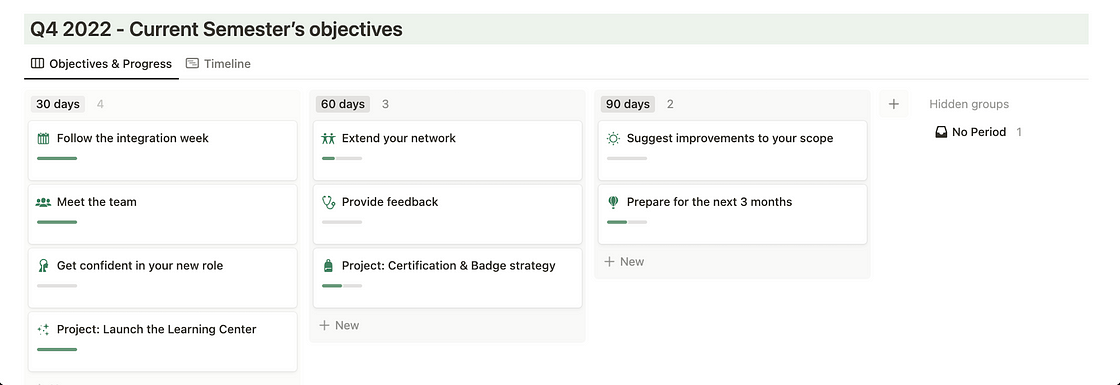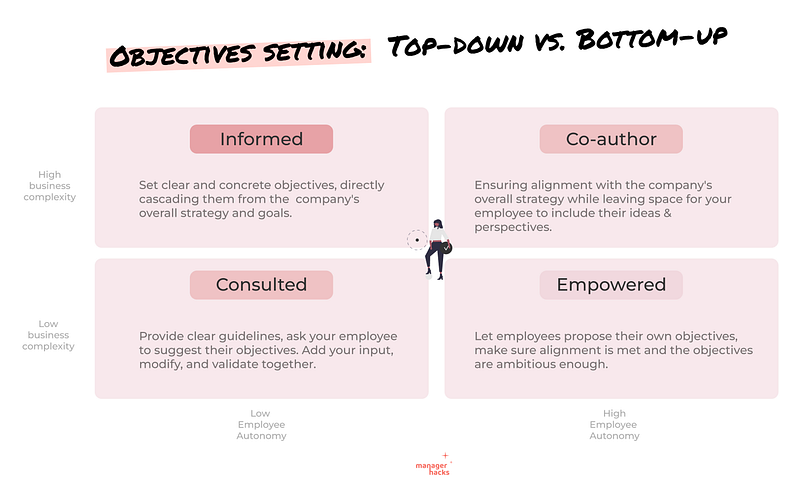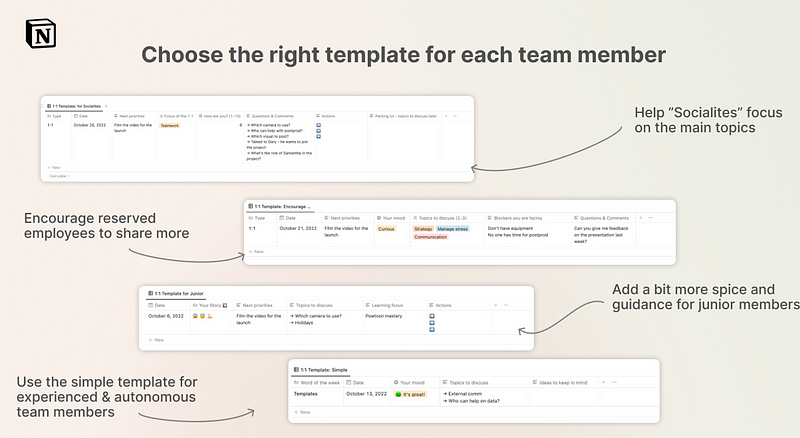
The mechanics of recruiting the right person for your team
When I ask managers about their biggest challenge, I rarely hear “Recruiting the right person for my team”.
And yet, the most common problems are “Conflict resolution”, “Time management”, or “Managing performance”.
What is the source of those challenges? Once we dig a bit deeper, we find that the cause of many team problems goes back to the way managers recruit for their team. It goes back to the amount of time you spend on recruiting & onboarding, and the strategies you deploy to make sure you have the right people to build a cohesive and performing team.

Image source: Pixabay
I have just closed the 7th recruitment for my team this year. Here is the recruitment system I built to be efficient and to make sure we have the right person for the job, and for the team.
- Define the role
- Write a crystal clear job description
- Reach the right candidate
- Always use a case study to test technical skills
- Involve your team in the interview process
- Ask open-ended questions
- Make an offer for equity and recognition
— — —
1. Define the role
Ask yourself the questions:
→ Why do I want to hire a new person?
→ What will happen if we don't hire?
→ What will this person do every day?
→ How will this person's job link to the overall vision?
→ Do I have a "typical" profile in mind, for example on LinkedIn?
→ Is there a specific skill gap I want to close in my team?
These questions will help you clarify what are the non-negotiable skills you are looking for, and what you want this person to bring to the team. It will help you visualise how you will sell the job, and at the same time — how you will test the candidates for the right fit.
For example, for a recent position for content writer, I explained the position internally and to candidates as "This person will want to win a Pulitzer with the Help Center articles they will write".
2. Write the job description
Make it specific and clear. Avoid jargon and blurry notions.
Don't be afraid by providing specific details. It might put off certain candidates, your pipe may be restricted, but at least you would have the right target in your pipe.
What should you include in the job description?
→ Explain what your company & team do
→ Why is this job important (the vision from the previous step)
→ The daily missions (with specifics and % of time breakdown)
→ Required experience & skills — limit to 7–8 lines max
→ Interview steps — limit to 5 steps max
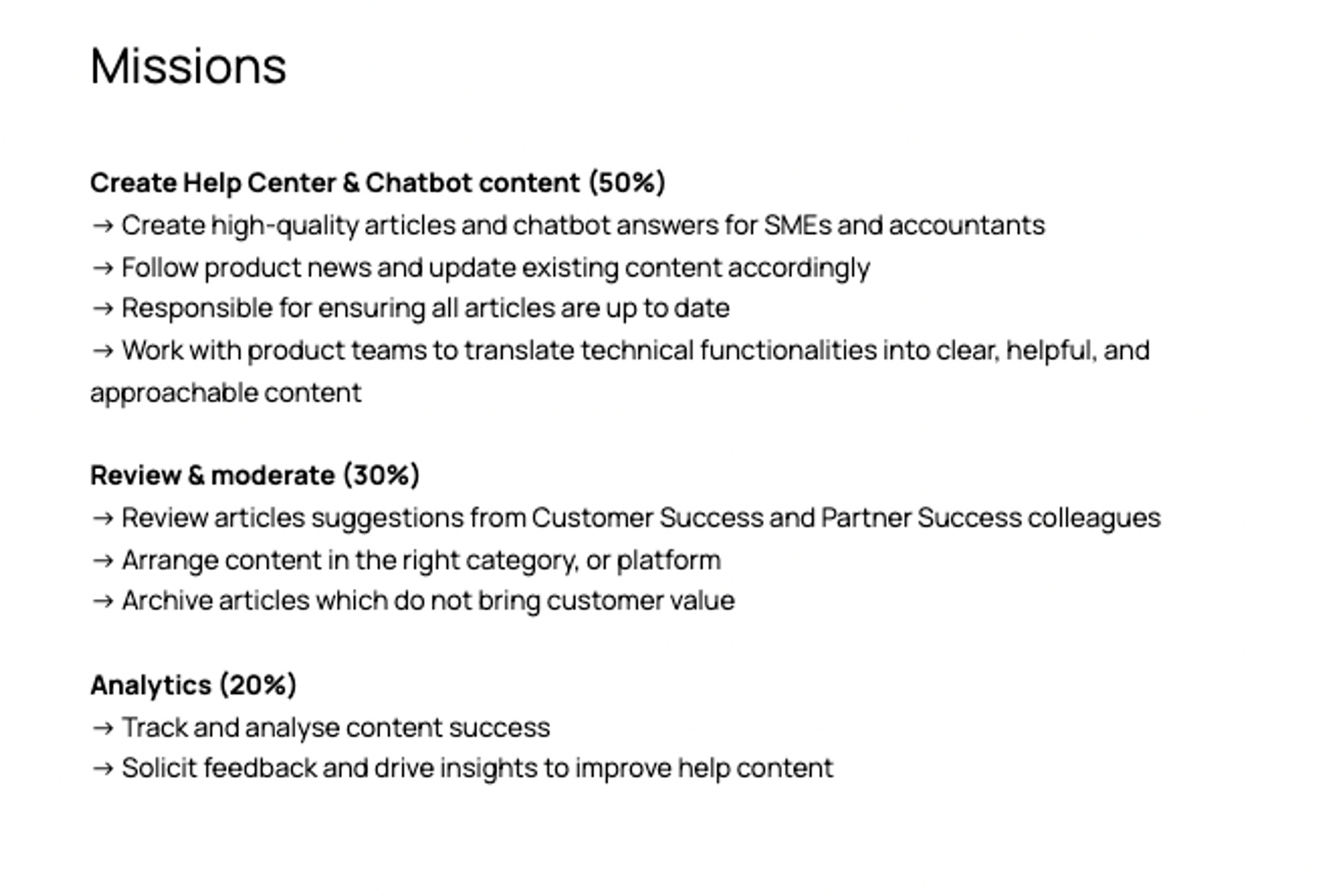
Example of Missions for Content writer
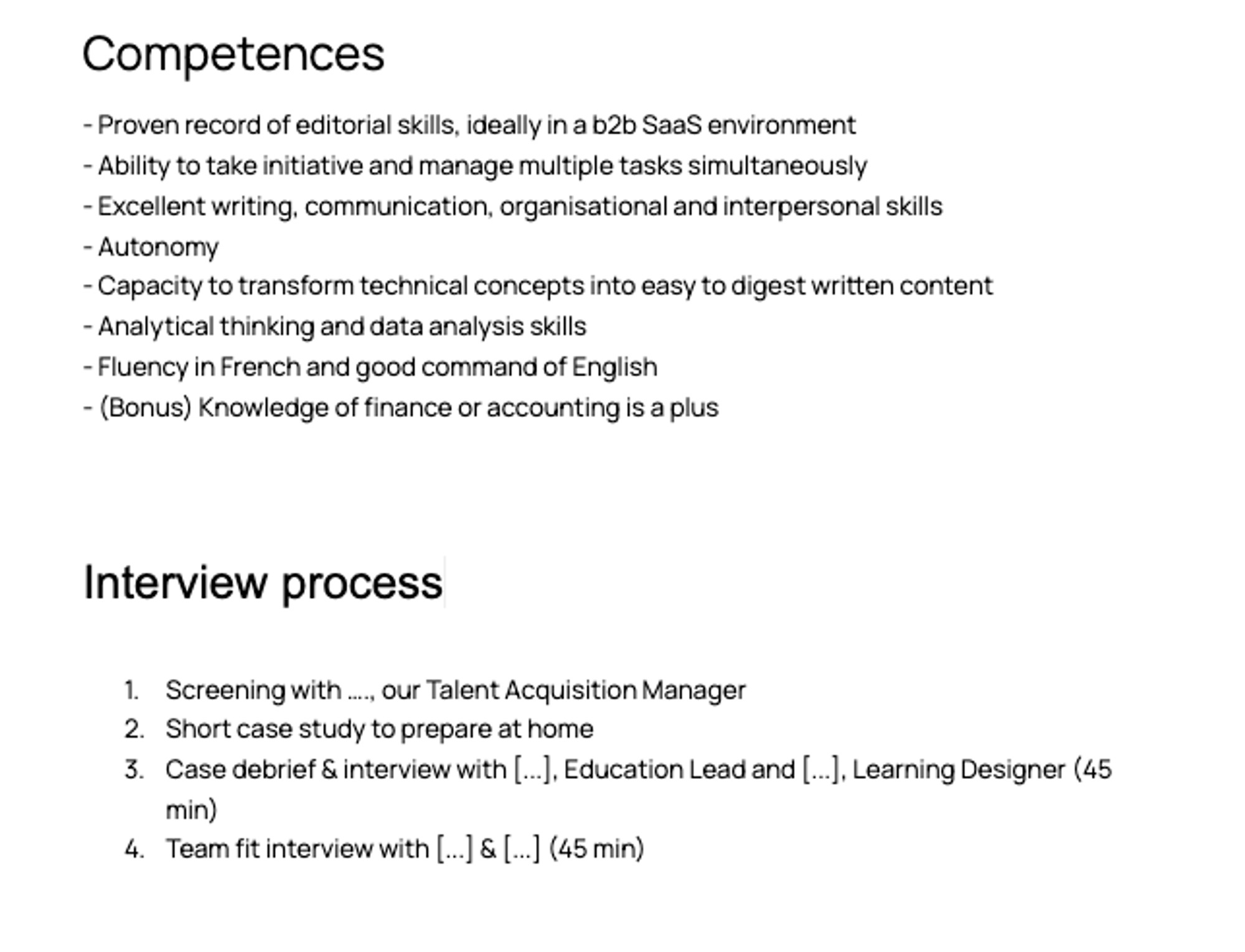
Example of competences & interview process for content writer
3. Reach the right candidate
I found half of my team by searching in LinkedIn, what we can call "soft headhunting".
You can (and should) post your offer on the common job boards but don't ignore headhunting.
At this stage you have a clear idea on the "persona" of your future team member. You can get lucky, they might be looking at the job boards right now, but chances are — they are not going to see your specific offer.
To succeed in your LinkedIn hunting: you need around 3–4 hours to find the right keywords, go through the search results, craft the right message to send, and block time each day to follow-up on the answers.
There is plenty of advice out there on how exactly to proceed with your headhunting but my message is: don't ignore it.
The second option is to screen résumés when candidates apply for the job you have posted.
Add a field for a short motivation paragraph, and filter out candidates who never wrote a word there. I cannot underline this enough.
Look for the overall presentation of the résumé, the signs of results and achievements. The diversity the candidate can offer to your team and, of course, the skills they put forward in their résumé.
Try not to be put off by any employment gaps — we all have a different story to tell and it is often better told in an interview.
4. Use a case study to test the technical skills
This is a must have in any recruitment I have now.
Short case study to do at home and debrief during the second interview.
Here is an example of a “Content writer” case study we just hired for.
It’s directly linked to the skills to use on the job. It tests writing, content presentation, critical thinking and pedagogical skills.
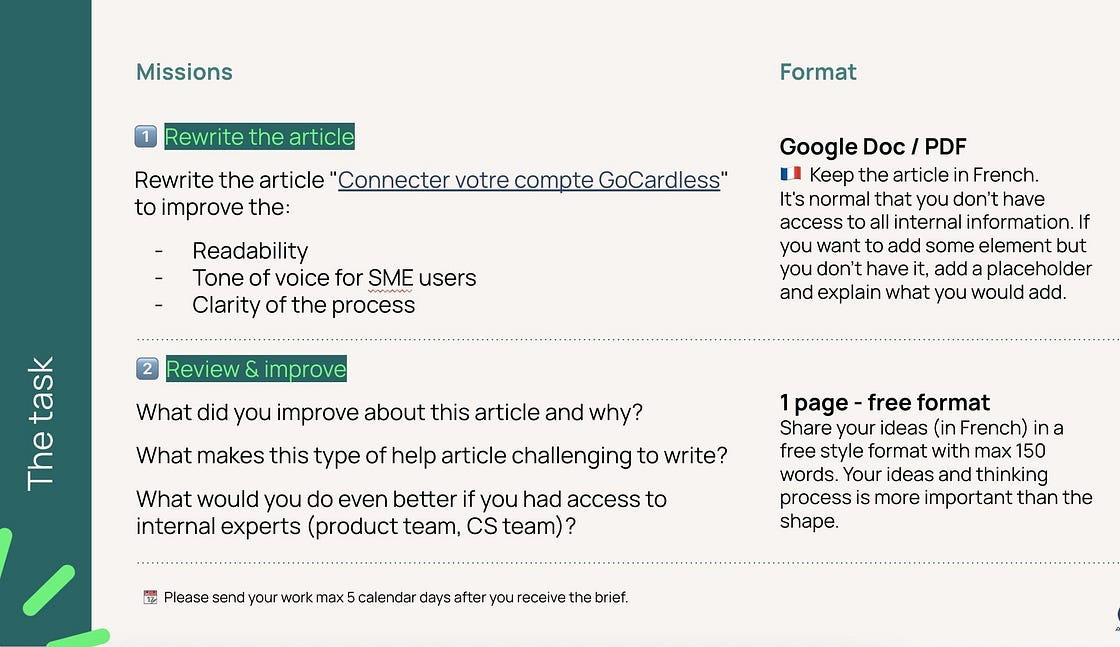
Case study example for “Content writer”
Use a scorecard to rate each case study. This will give you a head start in the debrief during the second interview. It will provide you with concrete examples of feedback for the candidates you will not be able to continue with.
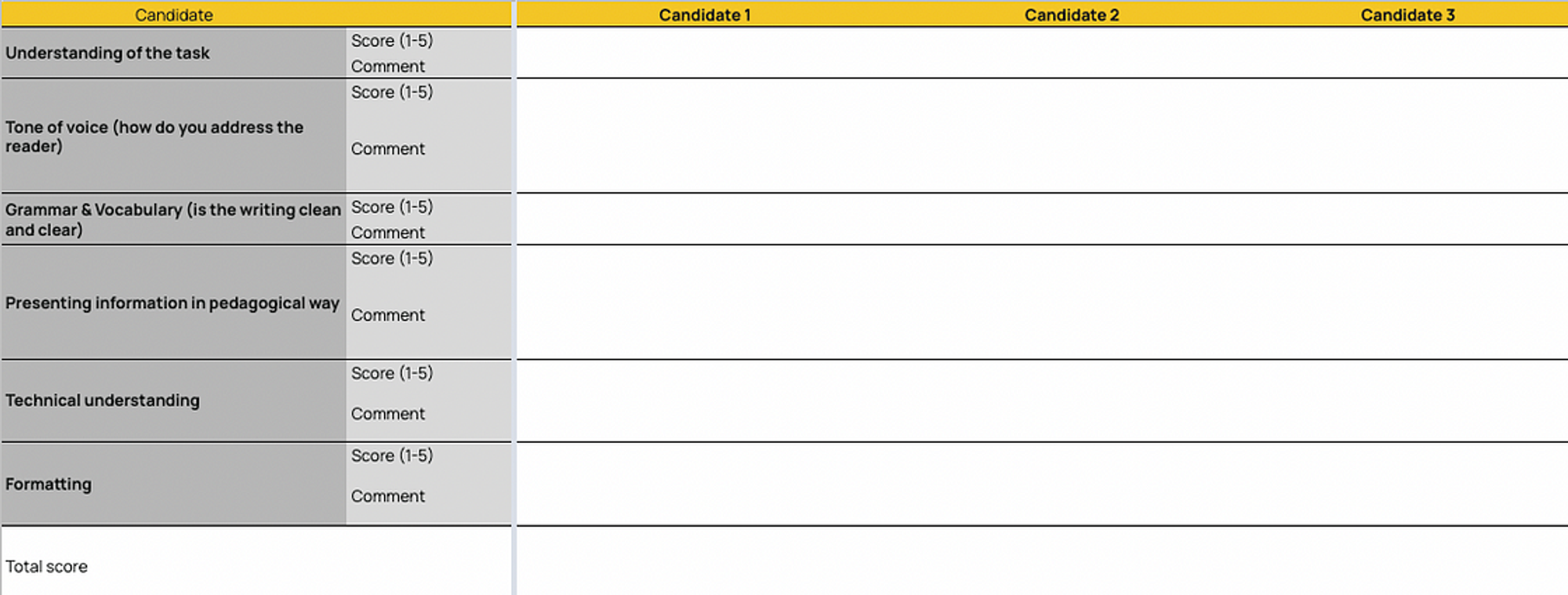
Sample scorecard for a Content writer case study
5. Involve the direct team in the interview process
Your goal is to build a cohesive and performing team, right?
Sometimes collaboration skills and culture fit will be as important as the technical skills of the candidate. If not more important, especially for junior candidates.
Get your team on board — for example, ask them to review the case study. Get them in pairs for the interviews. Debrief the candidates together.
Between each stage, do share specific points you would like others to focus on. You didn't have enough time to talk about collaboration skills?
Ask the next round colleagues to talk about working with others and help them with a specific open-ended question they can ask.
A great added bonus in this technique is that you will upskill your entire team in their recruitment skills and you can share the workload of future recruitment needs.
6. Ask the right questions
Prepare several questions in advance and ask them to each candidate. It is important to keep the conversation fluid but also to properly judge if the candidate is the right fit, both technically, and culturally.
The favourite questions I always ask:
- Case study: What was the easiest and the hardest part?
- Case study: What would you have done differently, if you had more time?
- Case study (end): What would you change in your answer based on our discussion?
- Experience: Which of your previous missions will help you most in this job?
- Experience: Why do you want to be [this job] and not [another job]?
- Experience: What would you like to avoid in your next job?
- Teamwork: Can you give me an example of a project where you worked with others?
- Personality: If I call one of your previous managers, how would they describe you with 5 adjectives?
- Curiosity: Let's use the next 15 minutes for your questions.
These are all conversation starters. They are open questions that can lead to different directions. While you are at the interview, it might be difficult to design an open, non-guiding question on the spot so do prepare them in advance.
7. Make an offer for team equity
When you hire, candidates come with specific salary expectations. If they fit in the salary framework (and you should have one!), then great.
If they have higher expectations, though, you should be very clear about the existing compensation framework and what you can offer for the job, in lin with the skills they have manifested throughout the recruitment process.
To avoid any misunderstanding at this stage, make sure you ask what are the salary expectations of the candidate at the very first interview.
While this stage can be daunting for young managers, once you realise you are hiring for the team, the conversation becomes manageable and even pleasant.
